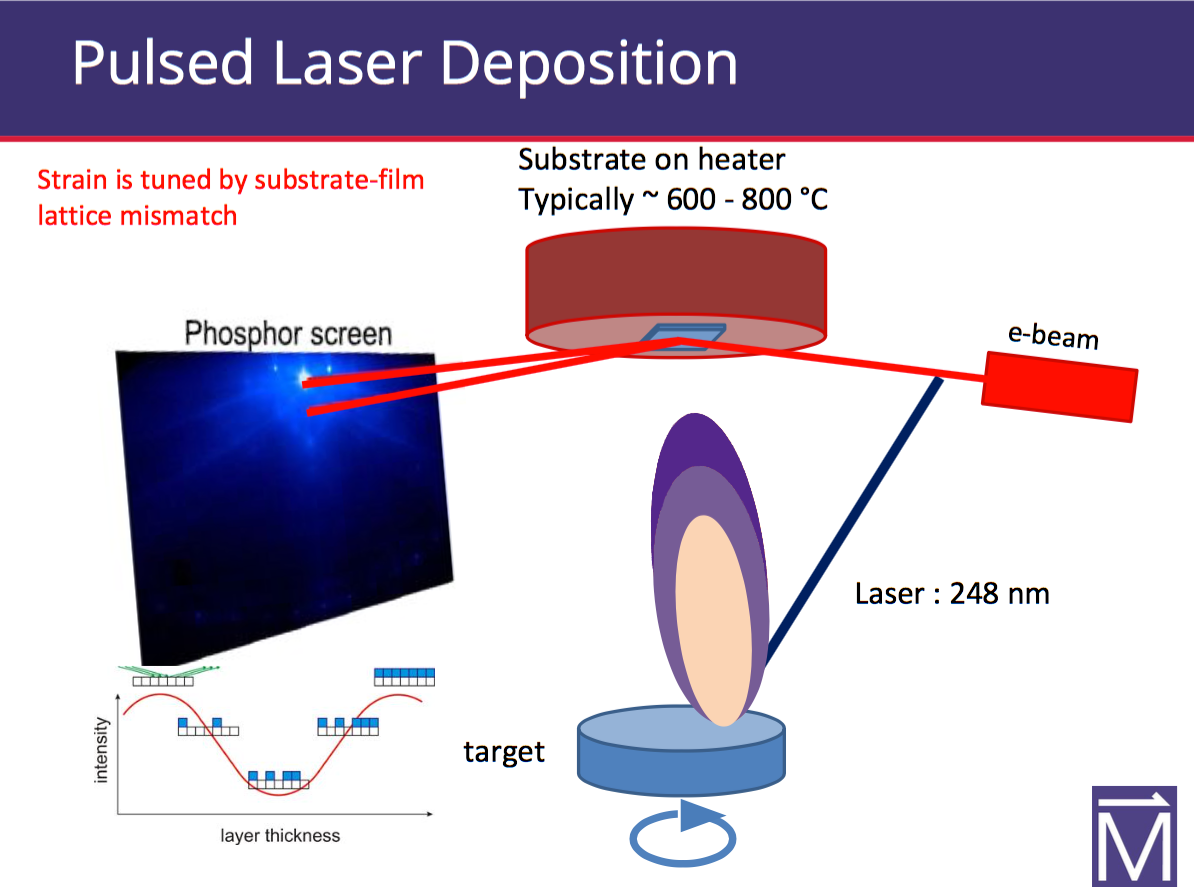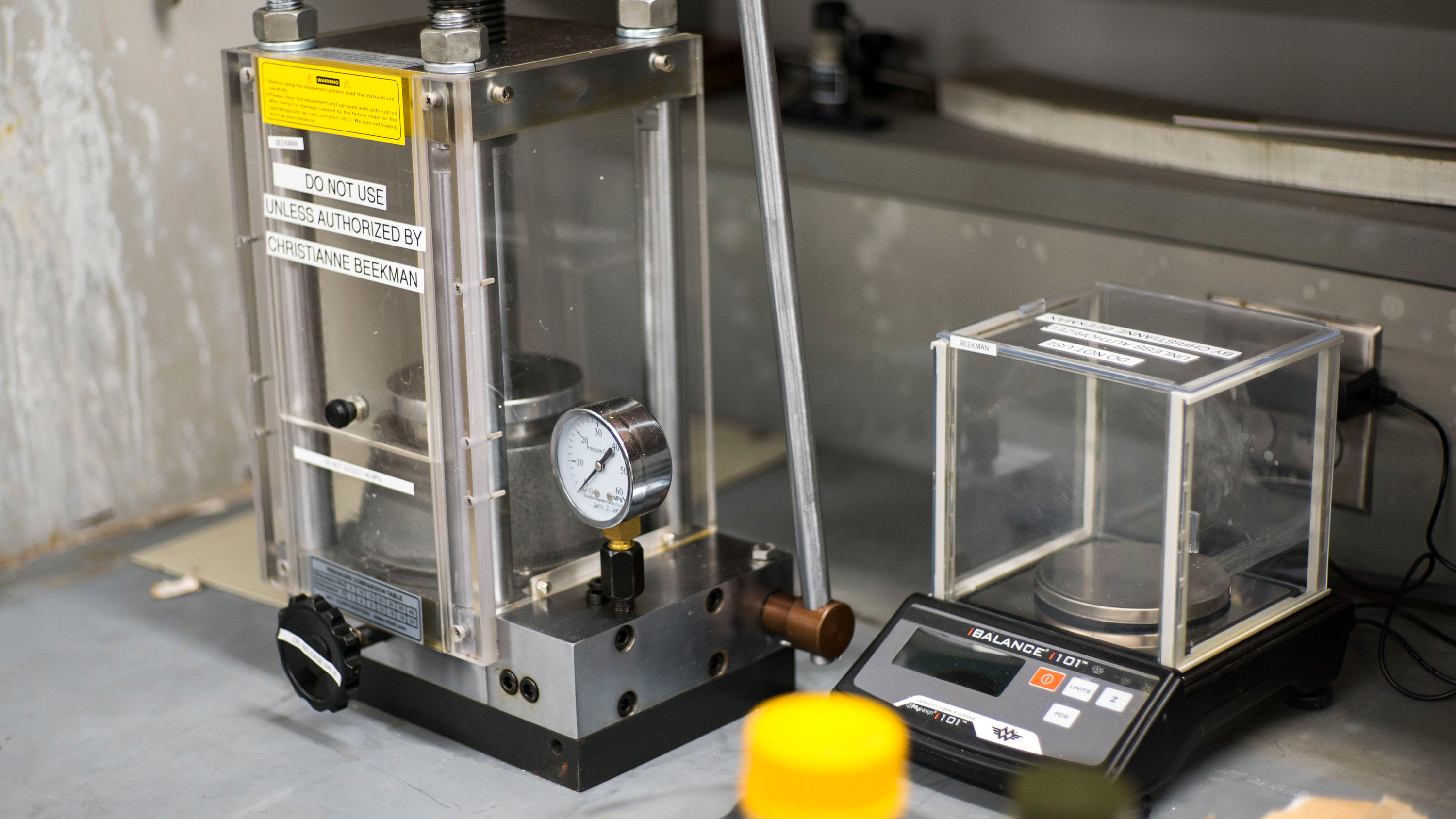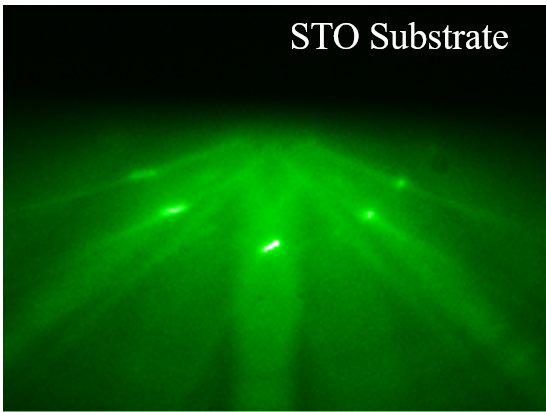Pulsed Laser Deposition is a growth technique for thin film materials, that uses laser pulses to ablate material from a target, and deposit that material on the surface of a chosen substrate. The general setup for our PLD system is shown in the figure. Inside a vacuum chamber, a target of the desired growth material is situated below a heater. A substrate is secured to the heater with silver paint, and the heater temperature can be controlled. As the target spins and glides slightly back and forth, a laser beam (KrF excimer laser, &lambda = 248 nm) is pulsed at the target at a constant frequency, to ablate a plasma plume evenly from the surface of the target, depositing material onto the substrate to grow the film. Growths can be done in vacuum or in controlled partial pressures of oxygen or argon. Our system also allows us to monitor sample growths with reflective high energy electron diffraction (RHEED) .

The targets that we use for film growth are home-made. We mill and mix powders together and pre-sintered this combination in a tube furnace in atmosphere to remove any water present. We then presss these combined powders into a pellet using a mechanical press and 1" diameter die. The pellet is then sintered at high temperature to form a dense target of the desired stoichiometry.

Our PLD system allows for monitoring of growths with RHEED, which is a diffraction measurement of the surface of a crystal to observe layer-by-layer growth. An incident electron beam is directed toward the substrate surface at a grazing angle, such that it is sensitive to the surface structure. The diffracted beam is then imaged on a phosphorus screen and changes in intensity and crystal symmetry are monitored during growth. The figure shows a RHEED pattern of an SrTiO3 substrate.
